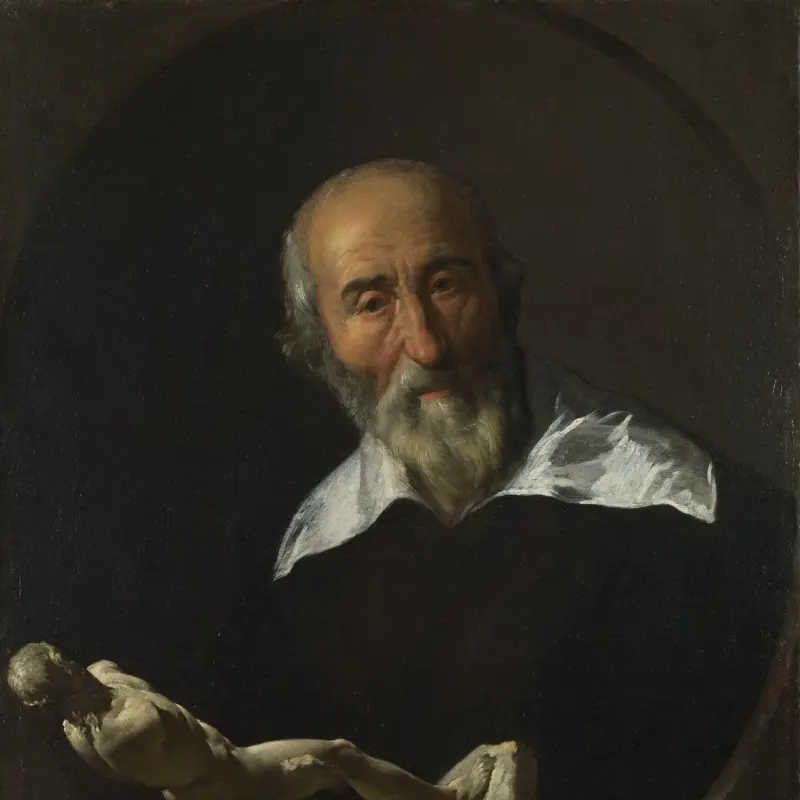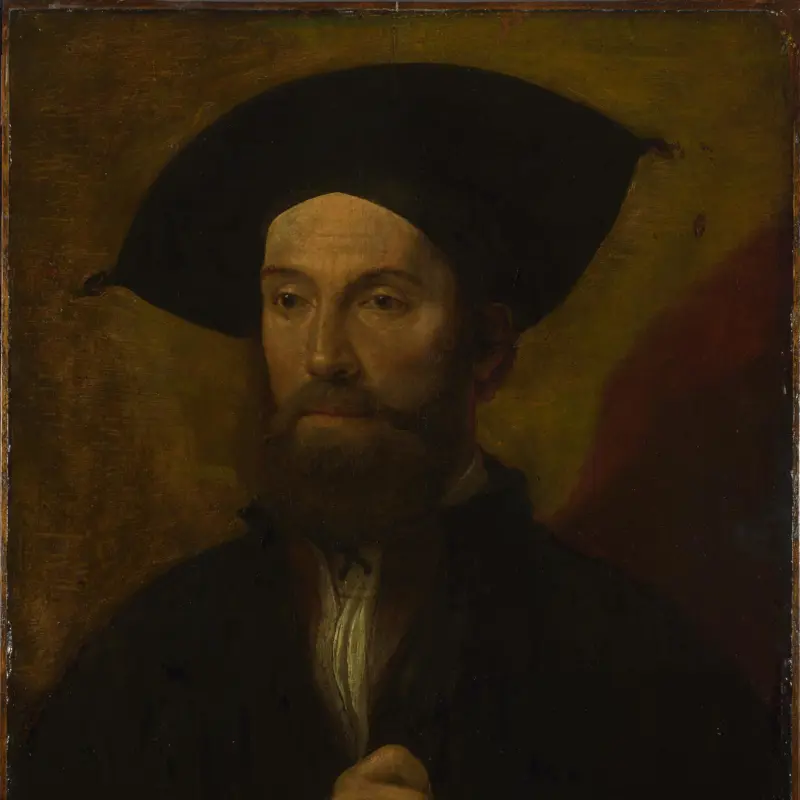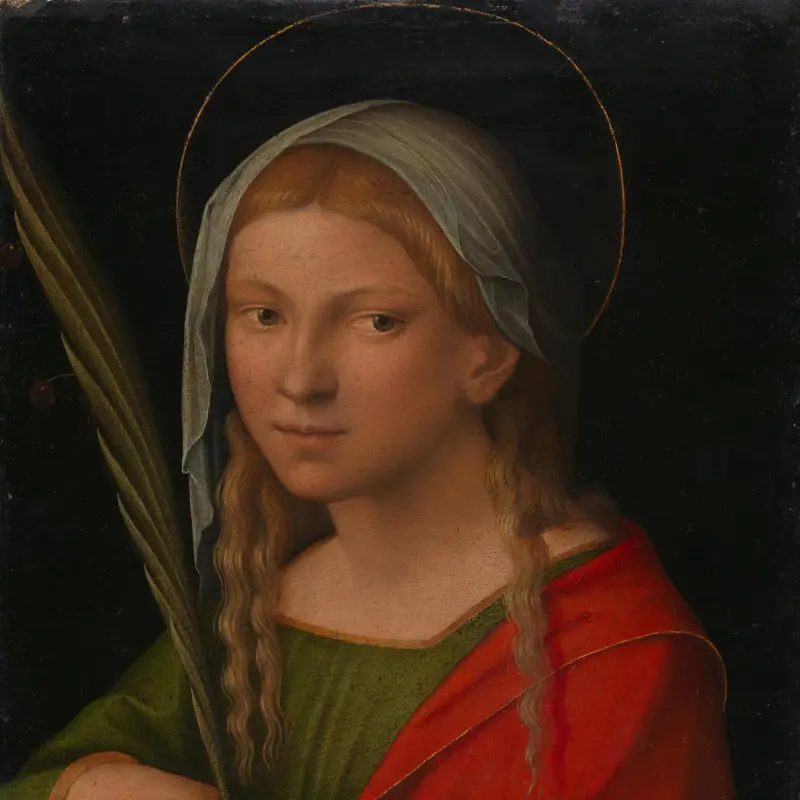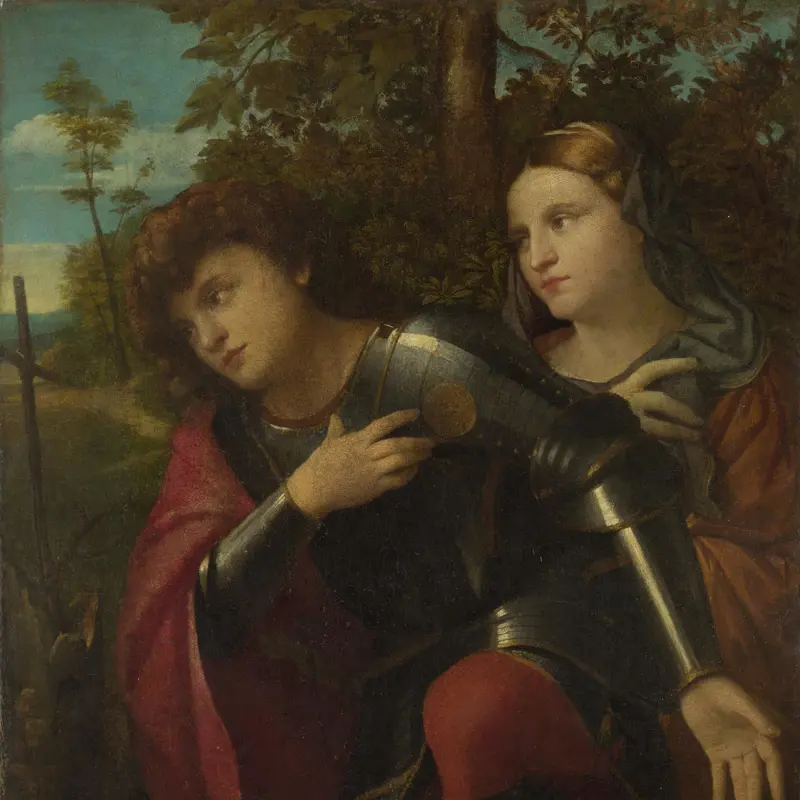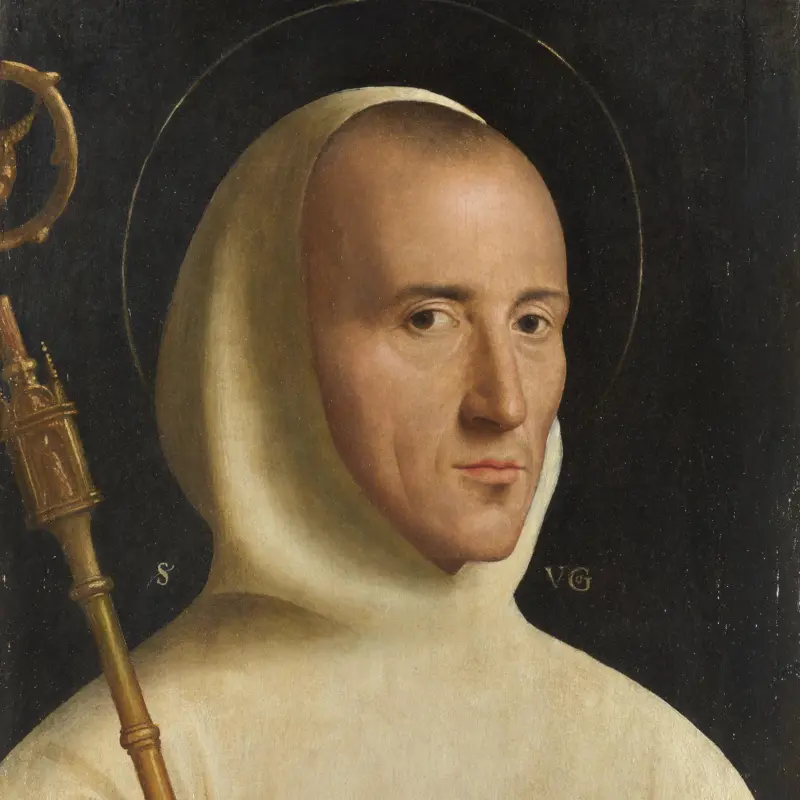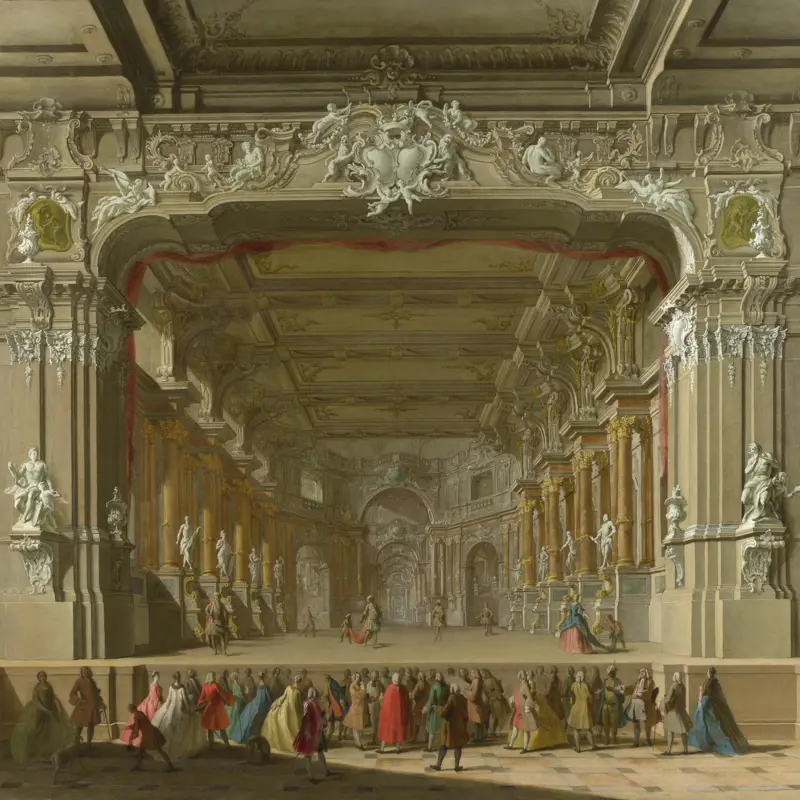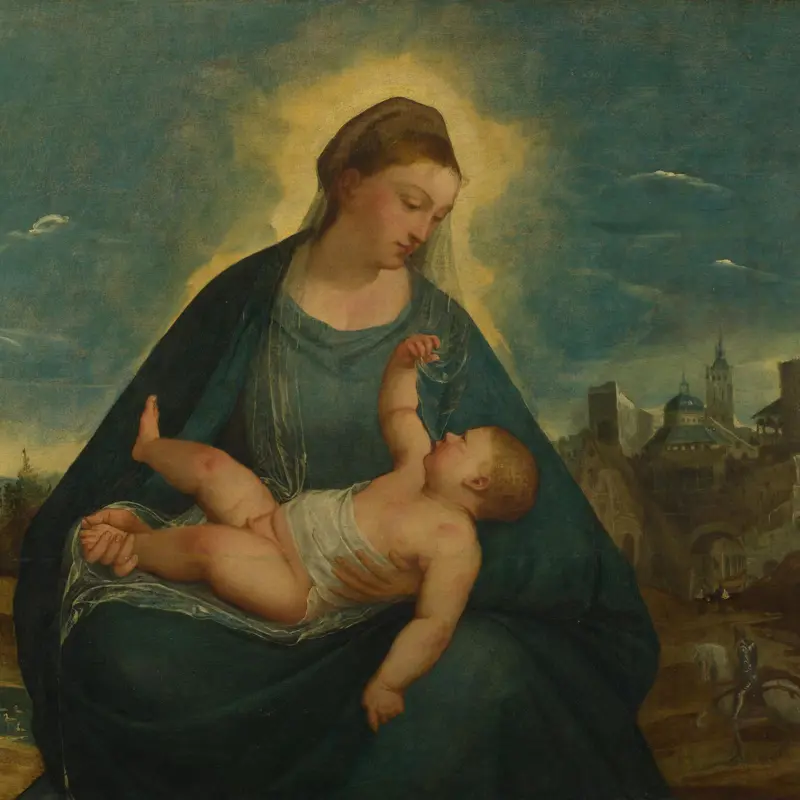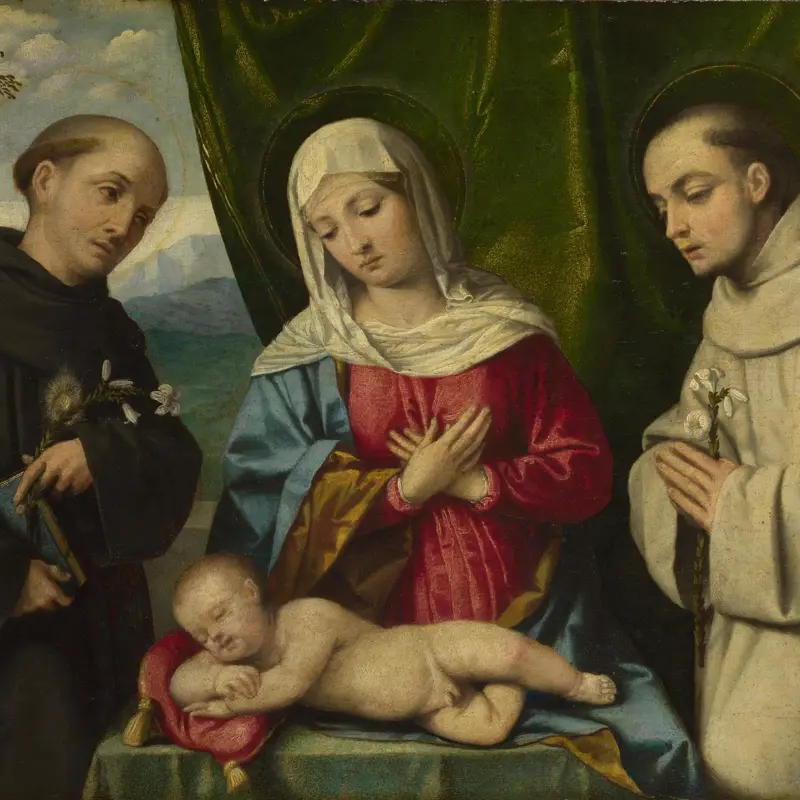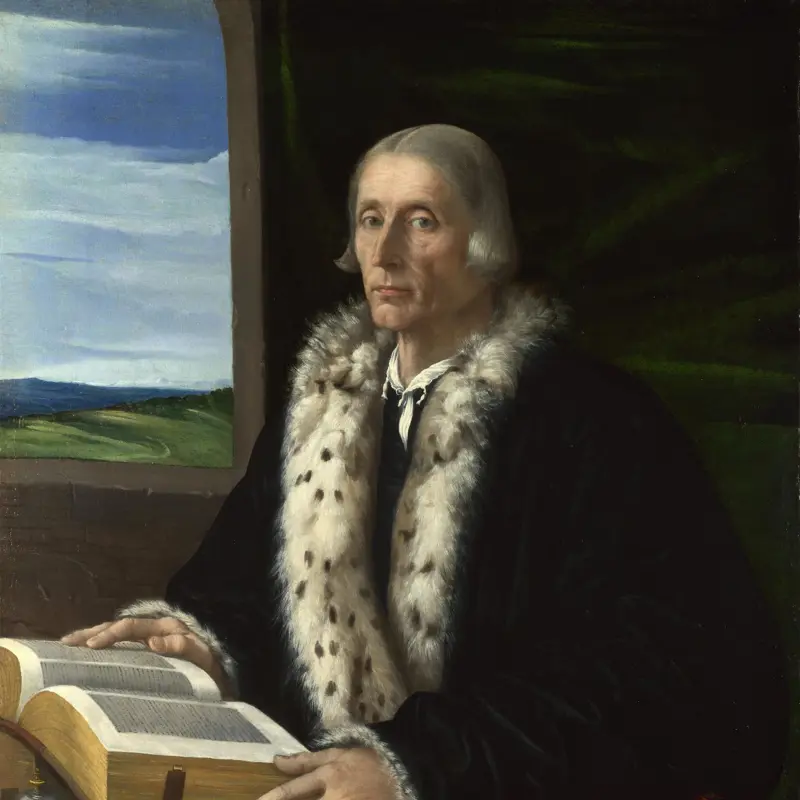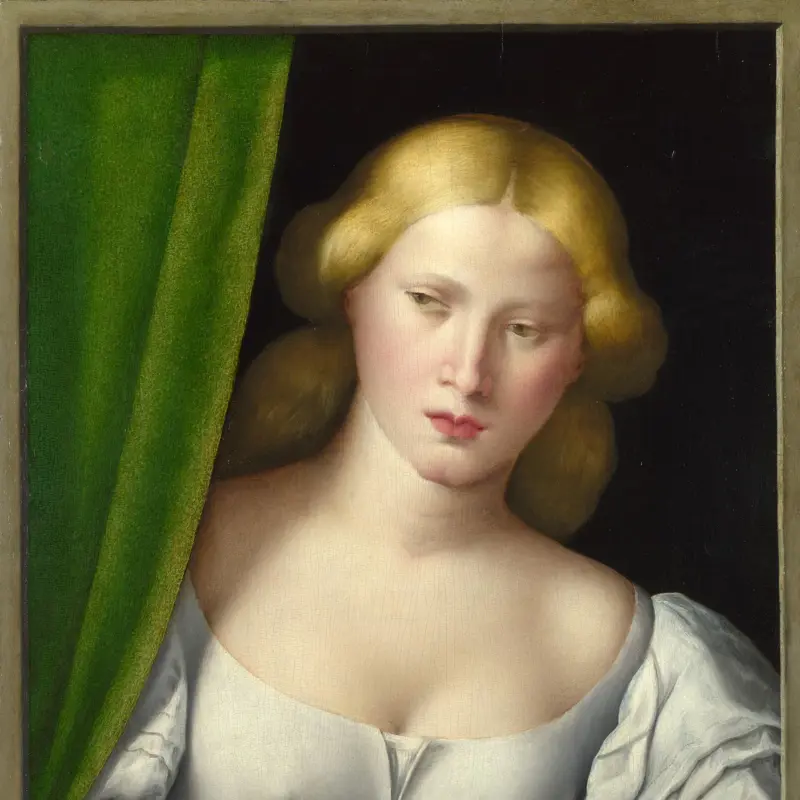Italian, North, 'A Battle', probably 1530s
About the work
Overview
An unidentified battle rages before a mountainous landscape. The picture may be a later copy of one of the lost frescoes by Piero della Francesca in the ducal palace in Ferrara. Leonello d’Este (1407–1450), Marquis of Ferrara, appears to be portrayed in profile at bottom left, suggesting that he may have commissioned the frescoes.
There is another possibly related battle scene in the Walters Art Gallery, Baltimore, which is of a similar size but lesser quality than the National Gallery’s painting. The costumes in both pictures point to a date in the 1530s but other details seem to reflect an earlier style. The paintings were probably both produced around Dosso Dossi’s workshop in Ferrara, but possibly not by the same artist. They may represent scenes of ancient history or exploits of the house of Este associated with French chivalric legends.
Key facts
Details
- Full title
- A Battle
- Artist
- Italian, North
- Date made
- Probably 1530s
- Medium and support
- Oil on wood
- Dimensions
- 71.1 × 94.6 cm
- Acquisition credit
- Bought, 1879
- Inventory number
- NG1062
- Location
- Not on display
- Collection
- Main Collection
- Previous owners
Provenance
Additional information
Text extracted from the ‘Provenance’ section of the catalogue entry in Martin Davies, ‘National Gallery Catalogues: The Earlier Italian Schools’, London 1986; for further information, see the full catalogue entry.
Bibliography
-
1901E. Jacobsen, 'Italienische Gemälde in der National Galerie zu London: Kritische Notizen zum Katalog von 1898', Repertorium für Kunstwissenschaft, XXIV, 1901
-
1931A. Morassi, 'The Other Painter of Malpaga', The Burlington Magazine, LVIII/336, 1931, pp. 118-29
-
1934G. Pudelko, 'The Early Works of Paolo Uccello', Art Bulletin, XVI/3, 1934, pp. 231-59
-
1941J. Lauts, 'Zu Piero die Franceschis verlorenen Fresken in Ferrara', Zeitschrift für Kunstgeschichte, 1941, pp. 67-72
-
1951Davies, Martin, National Gallery Catalogues: The Earlier Italian Schools, London 1951
-
1953J. Lauts, 'A Note on Piero della Francesca's Lost Ferrara Frescoes', The Burlington Magazine, XCV/602, 1953, pp. 166-7
-
1961M. Davies, The Earlier Italian Schools, 2nd edn, London 1961
-
1968A.K. Loss, 'The "Black" Figure in the Baltimore Copy of Piero della Francesca's Lost Ferrara Frescoes', L'arte, 1968, pp. 98-106
-
1976F. Zeri, Italian Paintings in the Walters Art Gallery, Baltimore 1976
-
1979M. Salmi, La pittura di Piero della Francesca, Novara 1979
-
1979V.I. Stoichita, 'Deux œuvres ferraraises au Musée d'Art de la République Socialiste de Roumanie', Revue roumaine d'histoire de l'art, 1979, pp. 65-79
-
1984M. Laclotte, 'Il ritratto di Sigismondo Malatesta di Piero della Francesca', in Piero della Francesca a Rimini. L'affresci nel Tempio Malatestiano, Bologna 1984, pp. 75-102
-
1986Davies, Martin, National Gallery Catalogues: The Earlier Italian Schools, revised edn, London 1986
-
1992E. Battisti, Piero della Francesca, Milan 1992
-
1992R. Lightbown, Piero della Francesca, New York 1992
-
2001
C. Baker and T. Henry, The National Gallery: Complete Illustrated Catalogue, London 2001
About this record
If you know more about this work or have spotted an error, please contact us. Please note that exhibition histories are listed from 2009 onwards. Bibliographies may not be complete; more comprehensive information is available in the National Gallery Library.

